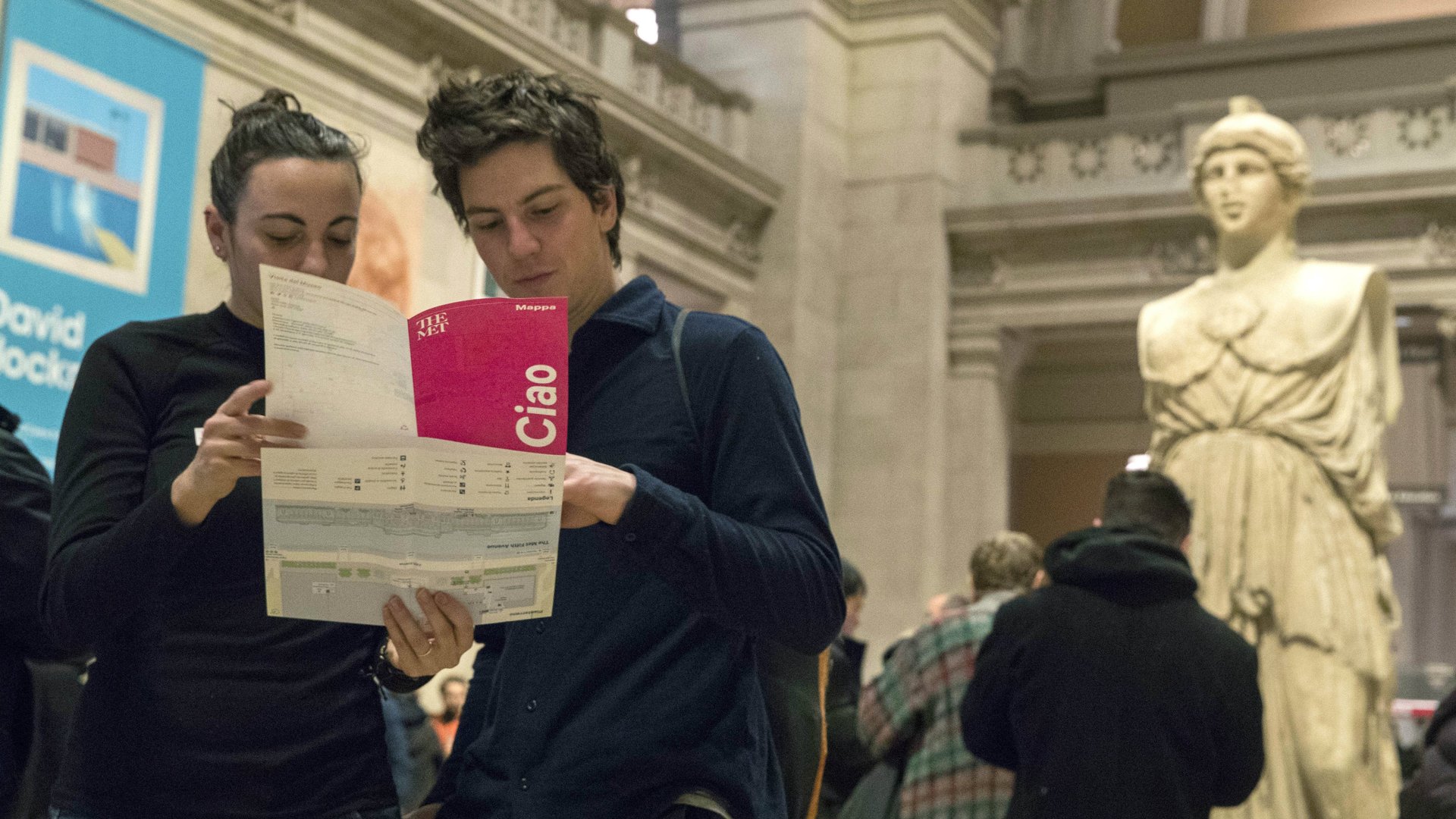Free access to arts and culture doesn’t just draw crowds—it shapes our societies
Like nearly every person who moved to a city with a creative career in mind, I was once broke.


Like nearly every person who moved to a city with a creative career in mind, I was once broke.
My days were spent at a magazine internship; my evenings as a £8-per-hour hostess in a central London restaurant. And while my diet may have relied disproportionately on toast and jam, there was one thing I was not starved of: arts and culture.
This was thanks, in part, to England’s admirable promise of free museums. In the late nineties, Britain’s New Labour government reaffirmed the goal of reinstating free entry for national museums, a policy which came to fruition in 2001. While the idea has not gone unchallenged, it has nevertheless stayed firmly in place since. According to the Department for Digital, Culture, Media, and Sport (DCMS) there were 47.3 million visits to government-sponsored museums in 2016/17, with Britain’s three leading institutions—The Tate, British Museum, and the National Gallery— regularly cracking the top ten most-visited art museums globally.
For me, back in 2011, the policy meant that while on breaks from a double shift at a grim restaurant in Covent Garden, I could wander around, say, the National Gallery or National Portrait Gallery—places that feel worlds away from the realities outside—and feel just as entitled to their contents as anyone else. Though my days were often less than inspiring, just 20 minutes spent in these spaces provided a kind of creative edification—a reminder that all artists, before they hung in museums or were published in books, operated from a place of uncertainty.
Last week’s announcement by New York City’s Metropolitan Museum of Art to instate an admission fee of $25 for out-of-state visitors rankled plenty of people. The reasons are obvious: Like me, many urbanites like the idea that it’s not just the privileged that can afford museums, but the masses too—especially when those institutions are funded in part by taxpayers.
The Met’s decision to scrap their pay-what-you-wish policy is limited to non-residents of New York state (students from New Jersey and Connecticut will also be spared) but the ID requirement could potentially exclude some New Yorkers without proper documentation. Beyond the specifics of enforcement, though, is the wider implication: It tells us that wide access to art is not only unsustainable, but that it’s not a civic priority, either.
While the piecemeal approach to arts funding in the US is a world away from the UK’s top-down approach, it is true that there are plenty of museums and institutions in New York City which offer pay as you wish time windows (some are sponsored by companies, such as Uniqlo’s partnership with MoMA), as well as museums that never charge. And indeed, the Met contends it went which its policy change to avoid charging for special exhibitions, a practice that British institutions are known (and often loathed) for. But while the method for keeping the doors of museums open may differ, the top-down idea that access to arts and culture is not just an urban perk but a government-sponsored right does something, I think, to the way we think about culture as a society.
And indeed, the data from the UK’s experiment backs that up. Ten years after the museums that formerly charged became free, admission rose at those institutions by 150%. But interestingly, admission rates at museums that were already free pre-2001—The Tate, British Museum, and National gallery—rose too. Making museums free, it seems, makes people think of museums as something to do.
It should be said that while visitors have undeniably increased in the UK since 2001, data about just who has visited the UK’s free art museums has not been as socio-economically diverse as idealistic policy-makers might’ve hoped. Data has been mixed. Some regional museums have seen growth in attendance from lower socio-economic groups, which was the policy’s goal. However critics point to examples like the year 2011/12, where visitor numbers grew in terms of tourists, but fell among lower socio-economic groups in the UK population.
While efforts to invite a broader swath of the population to visit the museums that house publicly-owned art should continue, I would argue that even when they don’t, there is public benefit (even beyond the “existence value” argument). After all, today’s hungry artists, writers, and creators are tomorrow’s Jean-Michel Basquiats, Lin-Manuel Mirandas, or Tracy Emins. These are people who shape the culture by creating new culture that’s more inclusive, expansive, and imaginative than what our (admittedly imperfect) cultural institutions already house.
Whether they are visiting museums as a kid with their parents, a tourist on their first visit to a city, or a broke waitress on a break, the reminder that artists and creators of history have done that too, matters hugely. It’s a reason and reminder to keep going.